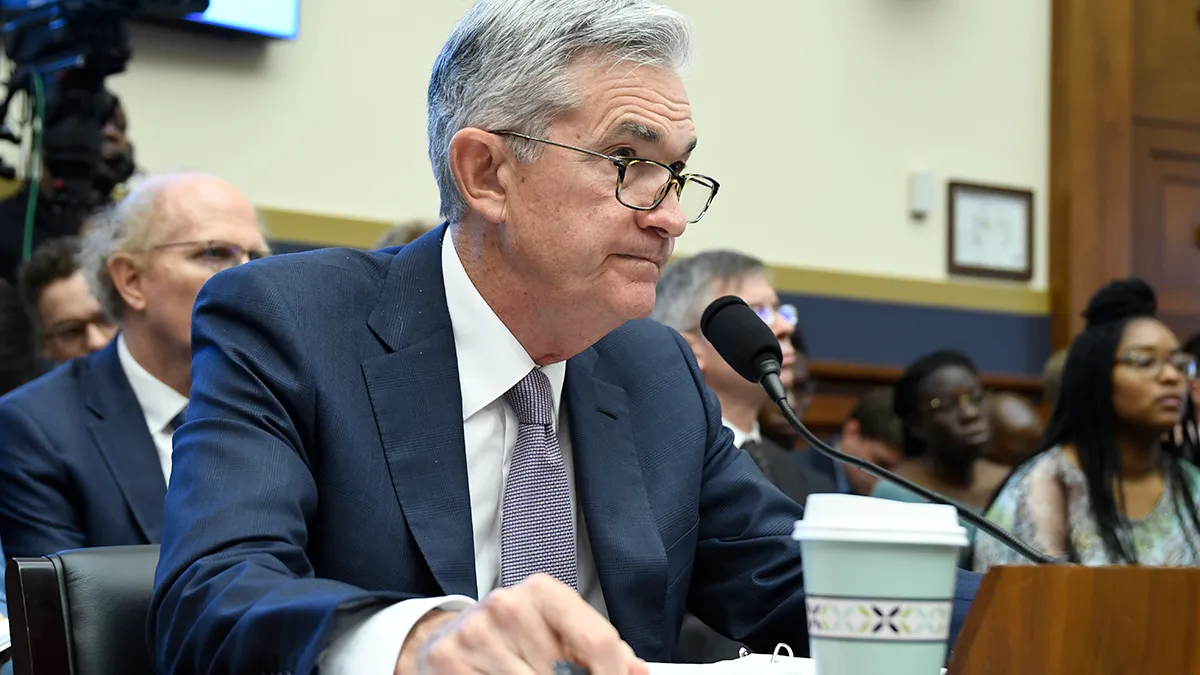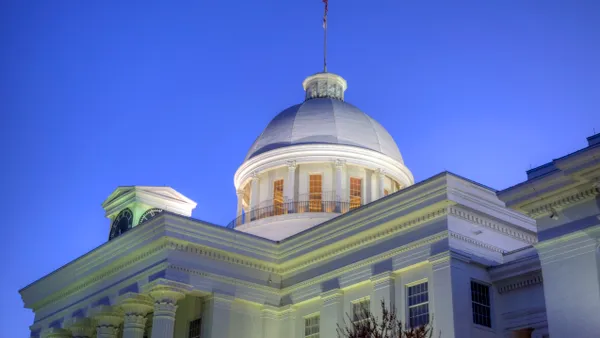UPDATE: July 24, 2019: Sen. Chris Van Hollen, D-MD, introduced a bill to force the Federal Reserve to create a real-time payments system in response to the sentiment that the central bank is dragging its feet in committing to the idea.
The system mandated by Van Hollen's Payments Modernization Act would compete with private payment systems such as the one launched in 2017 by The Clearing House. The bill would update the Expedited Funds Availability Act of 1987 to "require financial institutions to recognize funds in real time," according to a fact sheet. The bill also aims to give low-income Americans access to money they've earned when they need it without risking overdraft fees, said co-sponsor Sen. Elizabeth Warren, D-MA.
Reps. Ayanna Pressley, D-MA, and Jesús "Chuy" García, D-IL, introduced companion legislation in the House.
Dive Brief:
- A bipartisan group of senators wrote a letter Monday asking Federal Reserve Chairman Jerome Powell to explain why the Fed is considering creating its own real-time payments system to coexist with one created by The Clearing House in 2017. Sens. Mark Warner, D-VA, Thom Tillis, R-NC, David Perdue, R-GA, Jon Tester, D-MT and Tom Carper, D-DE, also asked when the system would be up and running, how much it would cost, and how it would support innovation.
- Large banks have invested more than $1 billion in The Clearing House's network, which is already used by digital payment services such as PayPal, Venmo and Zelle. They say a Fed system would cut into their profits and customer base — and delay the adoption of a network that would put money in consumers' accounts seconds after it's sent to them. Transactions in the traditional system are settled en masse three times a day and only during business hours, which can be costly to Americans who live paycheck to paycheck.
- Many community banks say The Clearing House hasn't proved it can reach all financial institutions — but the Fed has. Some large retailers and tech companies have said a Fed-built system would keep prices lower because the central bank needs simply to recoup its costs, not earn money. "Allowing any one for-profit operator to achieve a monopoly over a payment system would almost certainly result in loss of efficiency and ultimately an inferior product that increases social costs," Walmart said in a comment letter to the Fed.
Dive Insight:
The Fed launched a task force in 2015 to develop a plan for faster payments by 2020, but Powell said this month that deadline would not be met.
The senators, in their letter Monday, noted that the Fed pledged in 2015 that it "would not consider expanding its service provider role" unless the technology already in place in the private sector needed improvement. In a Politico article published July 19, Greg Baer, president and CEO of the Bank Policy Institute, which represents large banks, called the Fed’s effort to create its own real-time payment system a "bait and switch."
For many financial institutions, the rush to create a real-time payments system is a matter of keeping pace with technology that exists elsewhere: Countries such as Mexico and South Africa already operate under such a system.
The issue has taken partisan overtones in Congress, with some Republicans balking at a government-run payment system.
Warren, who is seeking the Democratic nomination for president, pledged July 18 to appoint Fed board members who would implement real-time payments.
The Fed sought comment in October on how it could better support faster payments. If the central bank decides to enter the payments network market, it may again seek public input on more detailed questions. And the system could take years to build.
It could take that long for The Clearing House's network to reach all 11,000 banks and credit unions, critics of that system said. The Clearing House said all financial institutions would receive the same benefits with the same fees. But it added it could change its pricing structure if the Fed jumps in.
Monday's letter also asked Powell which regulatory tools the Fed would use to oversee existing payments systems. Banks and the senators have both raised questions as to how a Fed system would be interoperable with The Clearing House's, considering the desired transaction speed.














